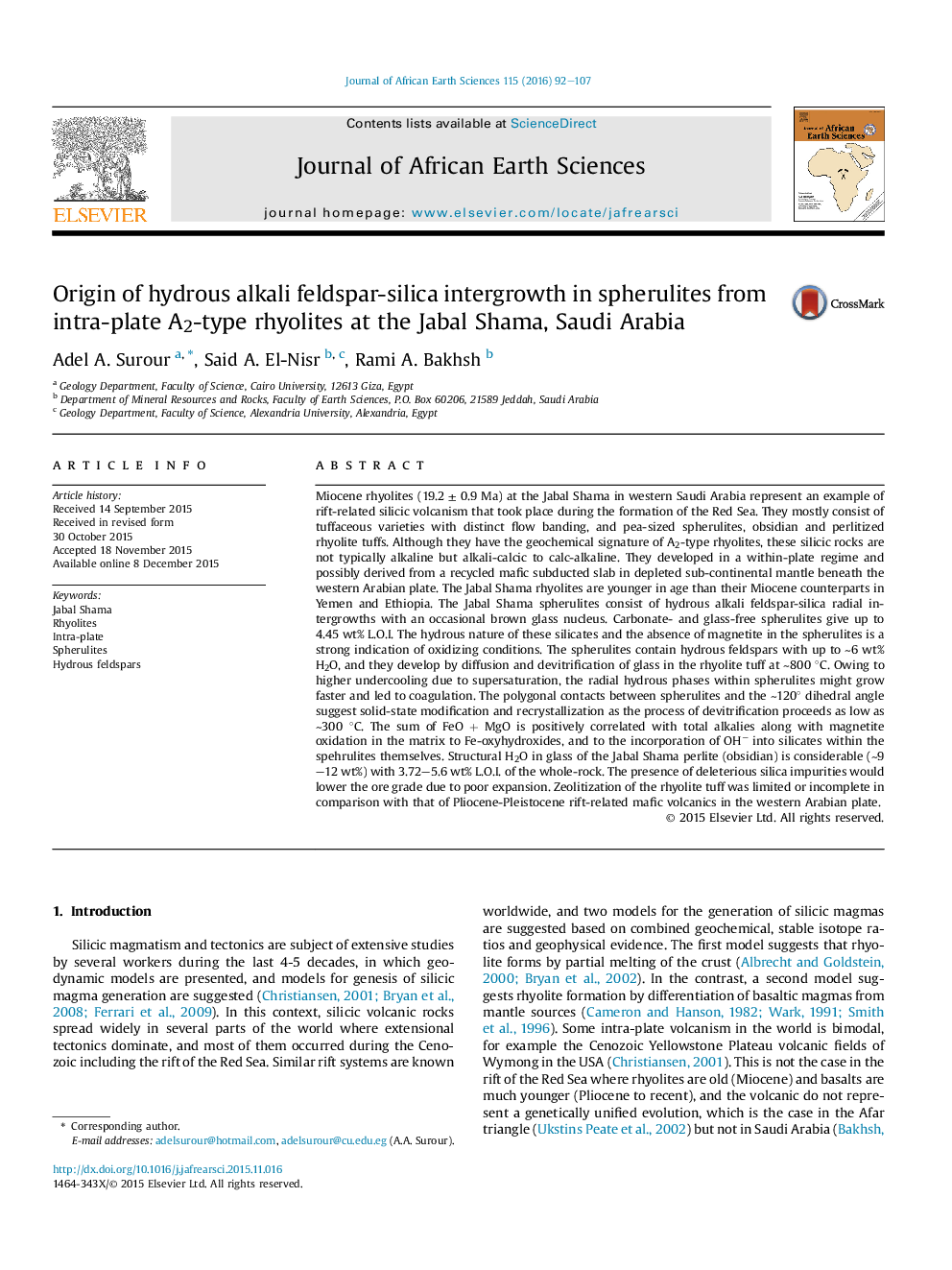| Article ID | Journal | Published Year | Pages | File Type |
|---|---|---|---|---|
| 4728403 | Journal of African Earth Sciences | 2016 | 16 Pages |
•Jabal Shama rhyolites are products of intra-plate magmatism.•Silicic volcanism took place during early phases of Red Sea rifting.•Thinly-laminated tuffs and spherulitic rhyolites are abundant.•Spherulites have unique hydrous alkali-feldspar-silica intergrowths.•Destabilization of silicates, and the role of magmatic and brine waters in evolution of spherulitess.
Miocene rhyolites (19.2 ± 0.9 Ma) at the Jabal Shama in western Saudi Arabia represent an example of rift-related silicic volcanism that took place during the formation of the Red Sea. They mostly consist of tuffaceous varieties with distinct flow banding, and pea-sized spherulites, obsidian and perlitized rhyolite tuffs. Although they have the geochemical signature of A2-type rhyolites, these silicic rocks are not typically alkaline but alkali-calcic to calc-alkaline. They developed in a within-plate regime and possibly derived from a recycled mafic subducted slab in depleted sub-continental mantle beneath the western Arabian plate. The Jabal Shama rhyolites are younger in age than their Miocene counterparts in Yemen and Ethiopia. The Jabal Shama spherulites consist of hydrous alkali feldspar-silica radial intergrowths with an occasional brown glass nucleus. Carbonate- and glass-free spherulites give up to 4.45 wt% L.O.I. The hydrous nature of these silicates and the absence of magnetite in the spherulites is a strong indication of oxidizing conditions. The spherulites contain hydrous feldspars with up to ∼6 wt% H2O, and they develop by diffusion and devitrification of glass in the rhyolite tuff at ∼800 °C. Owing to higher undercooling due to supersaturation, the radial hydrous phases within spherulites might grow faster and led to coagulation. The polygonal contacts between spherulites and the ∼120° dihedral angle suggest solid-state modification and recrystallization as the process of devitrification proceeds as low as ∼300 °C. The sum of FeO + MgO is positively correlated with total alkalies along with magnetite oxidation in the matrix to Fe-oxyhydroxides, and to the incorporation of OH− into silicates within the spehrulites themselves. Structural H2O in glass of the Jabal Shama perlite (obsidian) is considerable (∼9–12 wt%) with 3.72–5.6 wt% L.O.I. of the whole-rock. The presence of deleterious silica impurities would lower the ore grade due to poor expansion. Zeolitization of the rhyolite tuff was limited or incomplete in comparison with that of Pliocene-Pleistocene rift-related mafic volcanics in the western Arabian plate.
